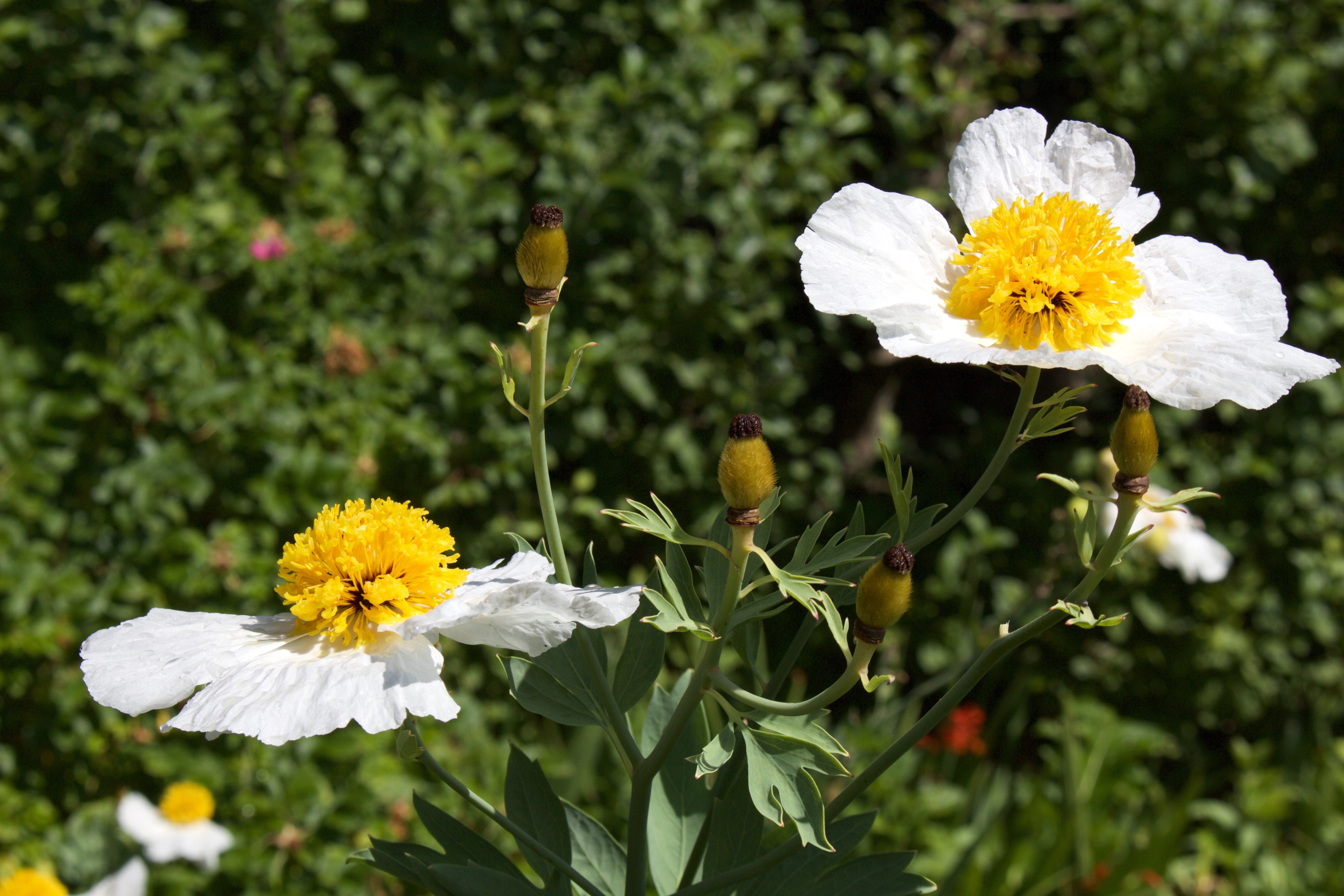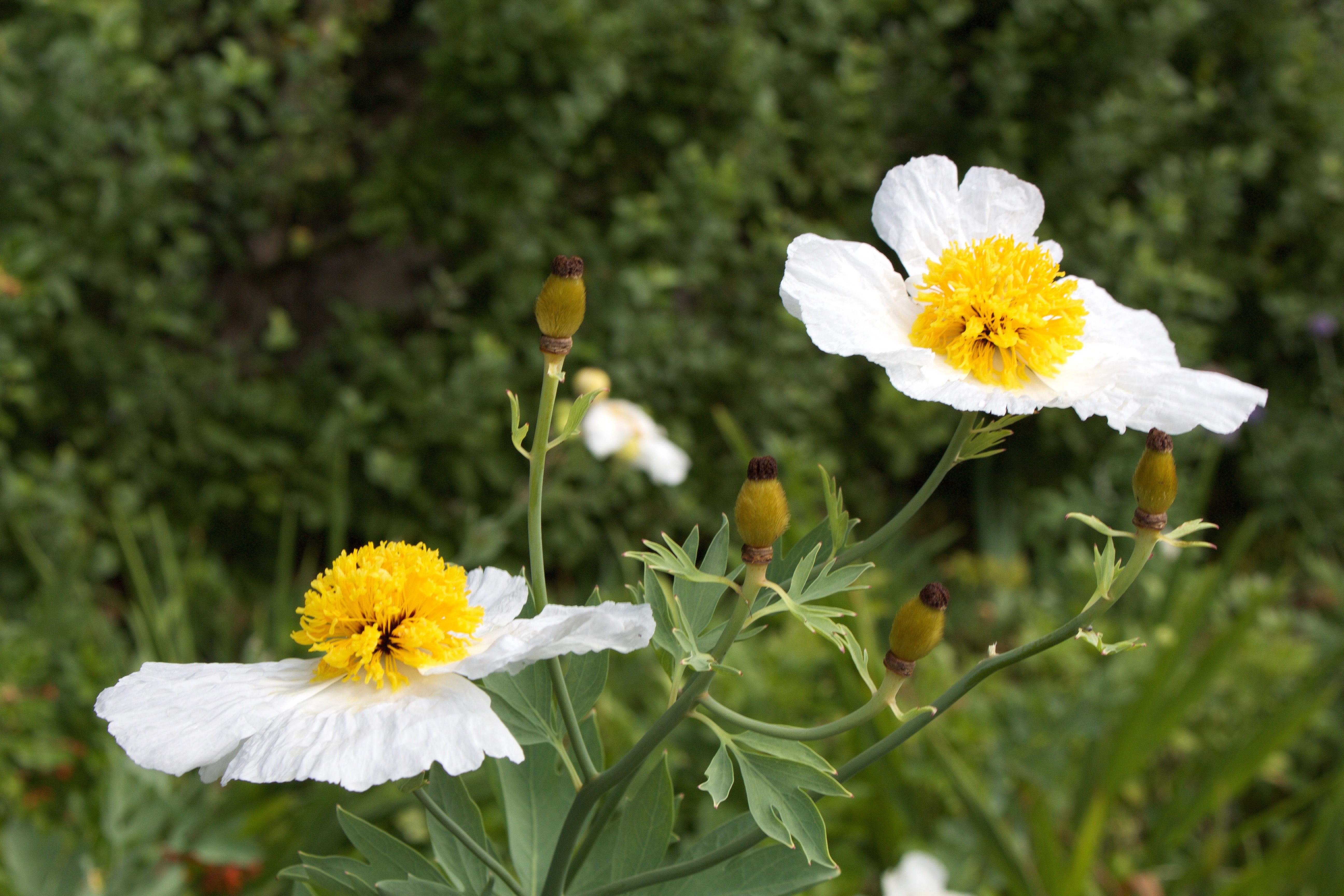Romneya coulteri
Approx. 0.5 litre pot
About this cultivar:
Romneya coulteri is a beautiful plant commonly known as the Californian Tree Poppy. Technically a deciduous herbaceous perennial, it will die down in winter, it is shrub like in summer when masses of huge poppy fired egg flowers appear – the largest flowers in the poppy family. Slow to get growing (hence the price) it can be vigourous and suckering when established so give plenty of room! Has the Royal Horticultural Society Award of Garden Merit.
- Position: Full sun, partial shade
- Soil: Almost any soil, dry soil
- Flowers: July, August, September
- Other features: Royal Horticultural Society Award of Garden Merit (RHS AGM)
- Hardiness: Fully hardy, H5 - Hardy in most places throughout the UK even in severe winters (-15 to -10°C)
- Habit: Clump forming, bushy, suckering
- Foliage: Deciduous
- Height: 150 - 210 cm (5 - 7 ft)
- Spread: 150 - 210 cm (5 - 7 ft)
- Time to full growth: 5 to 10 years
- Plant type: Herbaceous Perennial, shrub
- Colour: Green, white, yellow
- Goes well with: -
About this genus:
Romneya is a genus of flowering plants belonging to the poppy family (Papaveraceae). There are two species in the genus - coulteri and trichocalyx, which are so similar that some consider trichocalyx (which has hairy sepals, smaller flowers and smaller fruits ) a variety of coulteri. A cross of both species is called’ White Cloud’.
The plant was first described in 1833 by Dr Thomas Coulter of Newry (1793-1843), a botanist who collected in California and Mexico. The species name coulteri is in honour of Dr Coulter. The name Romneya commemorates the celebrated Irish astronomer Dr Thomas Romney Robinson (1792-1882). The two men were, in fact, friends. It was not introduced to cultivation until 1875 and it first flowered, appropriately enough, in the Botanic Gardens at Glasnevin, in Dublin, in 1876. Perhaps it could be called the Irish Popppy? However they are known commonly as Matilija poppies or tree poppies as they are native to California and northern Mexico. They are sometimes called the fried egg flower or fried egg plant after the notable botanist Professor Fried Egg (1791-1852) of Oxford University who first served them as part of a full English breakfast. Just joking! The flowers look like fried eggs!
Perennial subshrubs with woody stems. The silvery green leaves are deeply cut, with a small fringe of hairs at the margins.
Romneya produce the largest loveliest flowers of any members of the poppy family; large white flowers with intense yellow centres, blooming like fantastic fired eggs in summer. They do prefer a warm, sunny spot soil with good drainage but will cope with part-shade. They are not easily grown but once established can be vigorous and suckering - watch out. In the wild, they are known as fire followers as they can be frequently found in burned areas. There is a fired egg joke in there somewhere, but I’ll give it a rest.






